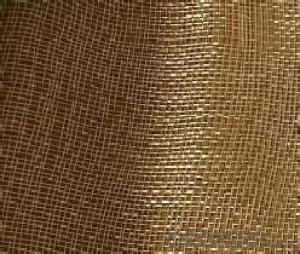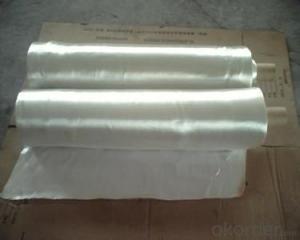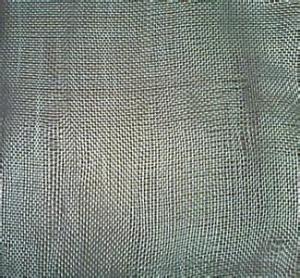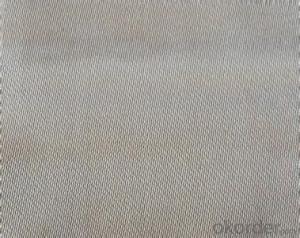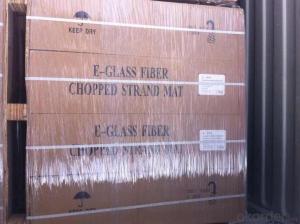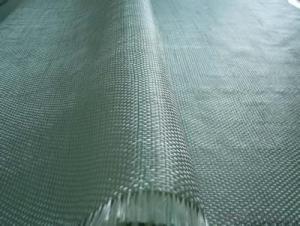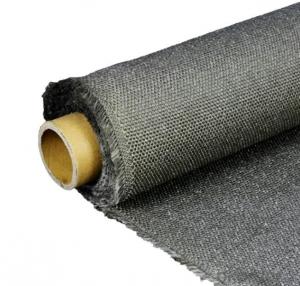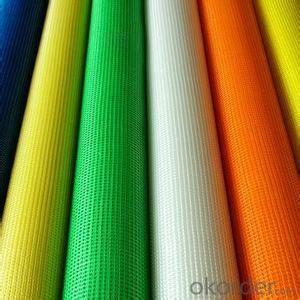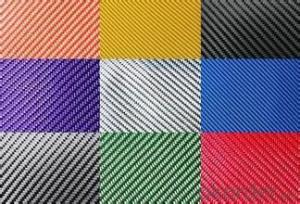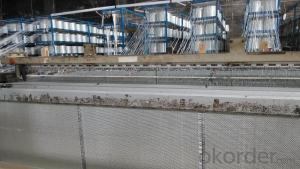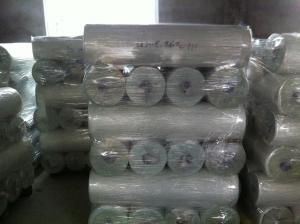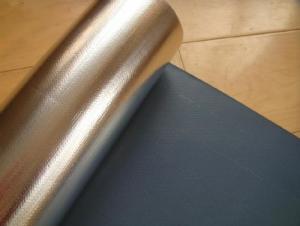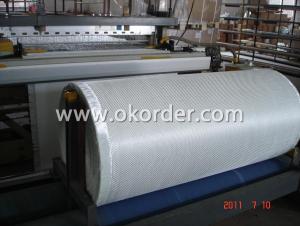Ptfe Teflon Coated Fiberglass Fabric High Temperature Silica Cloth CC2024
- Loading Port:
- China Main Port
- Payment Terms:
- TT OR LC
- Min Order Qty:
- -
- Supply Capability:
- -
OKorder Service Pledge
Quality Product, Order Online Tracking, Timely Delivery
OKorder Financial Service
Credit Rating, Credit Services, Credit Purchasing
You Might Also Like
Quick Details
| Place of Origin: | Model Number: | Weight: | |||
| Width: | Length: | Thickness: | |||
| Density: | Use: | Style: | |||
| Feature: | Supply Type: | Yarn Count: | |||
| Material: |
Packaging & Delivery
| Packaging Detail: | we packed 100m as one roll, one roll packed with box |
| Delivery Detail: | 3 days after get the deposit |
Specifications
high silica glass fiber cloth
1,300-1200g/m2
2,plain & Twill Woven
3,E-Glass
4,1000-2000mm
- Q: Can fiberglass fabric be used for acoustic insulation?
- Yes, fiberglass fabric can be used for acoustic insulation. Fiberglass fabric is known for its excellent sound-absorbing properties, making it an ideal material for acoustic insulation. It can effectively reduce noise by absorbing sound waves, preventing them from bouncing off hard surfaces and creating echoes or reverberations. Fiberglass fabric is commonly used in various applications such as wall panels, ceiling tiles, and acoustic curtains to improve sound quality and reduce unwanted noise in spaces such as theaters, recording studios, and offices. Additionally, fiberglass fabric is lightweight, durable, and easy to install, making it a popular choice for acoustic insulation solutions.
- Q: Can fiberglass fabrics be used for insulation in buildings?
- Indeed, insulation in buildings can be achieved using fiberglass fabrics. These fabrics consist of delicate glass fibers intricately woven together, and they are widely utilized as a means of thermal insulation. Their ability to minimize heat transfer is remarkable, allowing for a cozy atmosphere during chilly winters and a cool environment during scorching summers. Furthermore, fiberglass fabrics possess a lightweight nature, making installation effortless, and their exceptional resistance to fire makes them a highly sought-after option for insulation in various types of structures, be it residential, commercial, or industrial.
- Q: Can fiberglass fabrics be used for reinforcement in wind turbine blades?
- Certainly! Fiberglass fabrics are capable of reinforcing wind turbine blades. They possess numerous properties that render them appropriate for this purpose. Primarily, they exhibit a high strength-to-weight ratio, enabling them to provide exceptional strength without burdening the blades with excessive weight. This is crucial for wind turbine blades, as they must remain lightweight in order to efficiently harness wind energy. Moreover, fiberglass fabrics display exceptional fatigue resistance, which holds great significance for wind turbine blades due to the constant cyclic loading they experience from wind forces. The ability of fiberglass fabrics to endure repeated stress without deteriorating ensures the longevity and durability of the blades. Furthermore, fiberglass fabrics exhibit commendable dimensional stability, meaning they undergo minimal shrinkage or expansion when exposed to temperature fluctuations or moisture. This property is vital for wind turbine blades, as they must maintain their shape and structural integrity in varying environmental conditions. Additionally, fiberglass fabrics are resistant to corrosion, which proves advantageous for wind turbine blades that face harsh outdoor environments with elevated levels of moisture and salt. The corrosion resistance of fiberglass fabrics safeguards the blades against degradation, thereby enhancing their lifespan. To summarize, fiberglass fabrics encompass a range of properties that render them appropriate for reinforcing wind turbine blades. These properties include a high strength-to-weight ratio, fatigue resistance, dimensional stability, and corrosion resistance. Consequently, wind turbines operate efficiently and endure for longer periods.
- Q: Is fiberglass fabric resistant to chemicals in food processing?
- Yes, fiberglass fabric is generally resistant to chemicals in food processing.
- Q: What are the typical applications of fiberglass fabrics?
- Fiberglass fabrics are commonly used in applications that require strength, durability, and resistance to heat and chemicals. Some typical applications include insulation, reinforcement in composite materials, construction of boats and automobile bodies, manufacturing of aerospace components, and production of sports equipment such as surfboards and canoes.
- Q: How is fiberglass fabric different from other types of fabric?
- The composition and unique properties of fiberglass fabric set it apart from other types of fabric. Unlike natural fabrics like cotton or silk, fiberglass fabric is woven from thin strands of glass. This distinctive composition gives fiberglass fabric several advantages over other fabrics. First and foremost, fiberglass fabric is renowned for its exceptional strength and durability. The glass fibers used in its production are incredibly strong and resistant to tearing, stretching, and general wear and tear. This makes fiberglass fabric ideal for applications that require durability, such as in construction or industrial settings. Additionally, fiberglass fabric exhibits high heat resistance. The glass fibers used in its production have a high melting point, allowing the fabric to withstand extreme temperatures without deteriorating or catching fire. This makes fiberglass fabric suitable for use in applications where heat resistance is crucial, such as in fire-resistant clothing or insulation materials. Furthermore, fiberglass fabric boasts excellent chemical resistance. It is not easily affected by most chemicals, including acids, alkalis, and solvents. This makes fiberglass fabric a preferred choice in industries where exposure to corrosive substances is common, such as chemical processing or automotive manufacturing. Moreover, fiberglass fabric is known for its lightweight nature. Despite its strength and durability, fiberglass fabric is relatively light, making it easier to handle and transport compared to other heavy-duty fabrics. This lightweight property is particularly advantageous in applications where weight is a concern, such as in the aerospace or automotive industries. Lastly, fiberglass fabric possesses excellent insulation properties. It is a poor conductor of heat and electricity, making it an effective insulator. This insulation capability is beneficial in various applications, including thermal insulation for buildings, electrical insulation for wiring, or even the production of protective clothing for workers in extreme environments. In conclusion, fiberglass fabric's exceptional strength, heat resistance, chemical resistance, lightweight nature, and insulation properties make it stand out from other fabrics. Its unique composition and advantageous properties make it a versatile and preferred choice in various industries and applications.
- Q: Can fiberglass fabric be used for insulation in cold storage facilities?
- Certainly, cold storage facilities can utilize fiberglass fabric as insulation. Renowned for its remarkable thermal insulation properties, fiberglass fabric proves to be a perfect selection for insulating cold storage facilities. It exhibits utmost effectiveness in impeding heat transfer, thereby aiding in maintaining the desired temperature within the facility. Furthermore, fiberglass fabric showcases resilience against moisture, mold, and mildew, prevailing issues in cold storage environments. This renders it an enduring and enduring option for insulation. Additionally, fiberglass fabric boasts effortless installation and adaptability to accommodate diverse shapes and sizes, guaranteeing comprehensive coverage and insulation throughout the facility.
- Q: What are the different fiberglass fabric coatings for weather resistance?
- Some different fiberglass fabric coatings for weather resistance include silicone coatings, polyurethane coatings, acrylic coatings, and vinyl coatings. These coatings help to provide protection against moisture, UV rays, and other environmental elements, enhancing the durability and longevity of fiberglass fabric in various weather conditions.
- Q: Can fiberglass fabric be used for insulation in cryogenic systems?
- Yes, fiberglass fabric can be used for insulation in cryogenic systems. Fiberglass fabric is a commonly used material for insulation due to its excellent thermal properties and low thermal conductivity. It can effectively reduce heat transfer and maintain low temperatures in cryogenic systems. Additionally, fiberglass fabric is also resistant to extreme temperatures and does not degrade or lose its insulation properties in cryogenic conditions. Therefore, it is a suitable choice for insulating cryogenic systems and ensuring the efficient and safe operation of such systems.
- Q: Which kind of antirust paint is better for iron railings?
- Marine environment can use epoxy zinc rich primer, epoxy cast iron intermediate paint and fluorocarbon paint, corrosion resistance is strong, the time limit can be up to 20 years, if other places with higher requirements for corrosion protection time can also be used.
Send your message to us
Ptfe Teflon Coated Fiberglass Fabric High Temperature Silica Cloth CC2024
- Loading Port:
- China Main Port
- Payment Terms:
- TT OR LC
- Min Order Qty:
- -
- Supply Capability:
- -
OKorder Service Pledge
Quality Product, Order Online Tracking, Timely Delivery
OKorder Financial Service
Credit Rating, Credit Services, Credit Purchasing
Similar products
Hot products
Hot Searches
Related keywords
